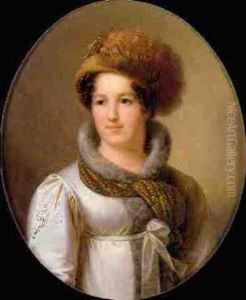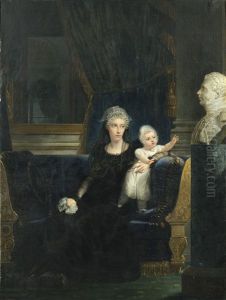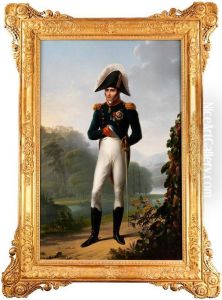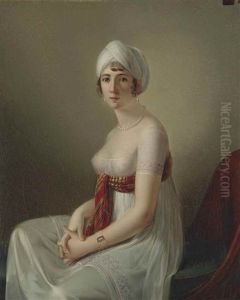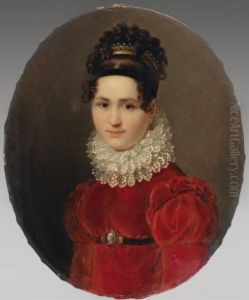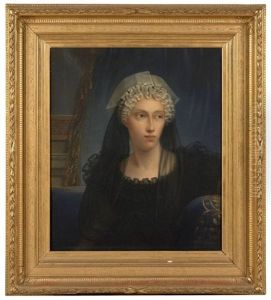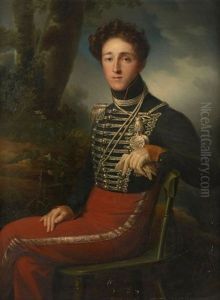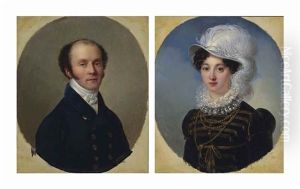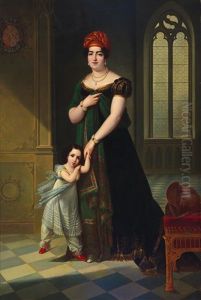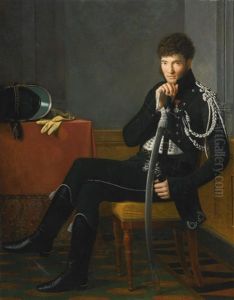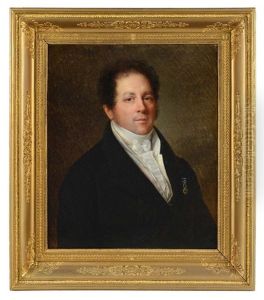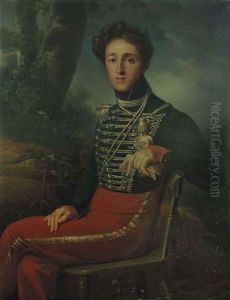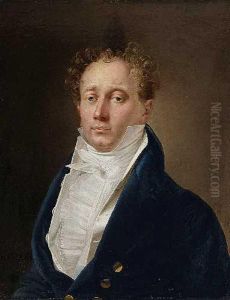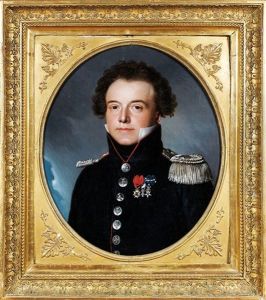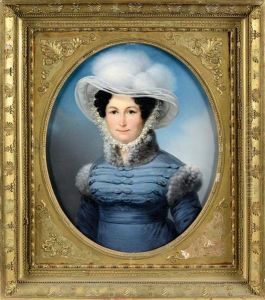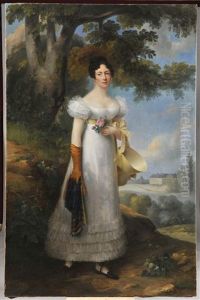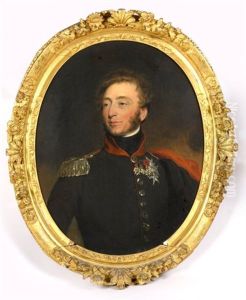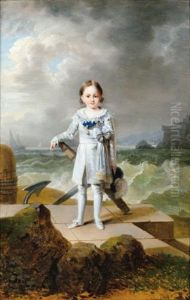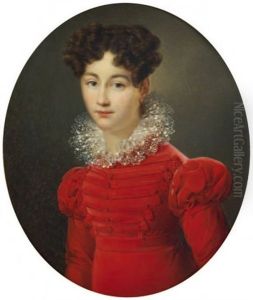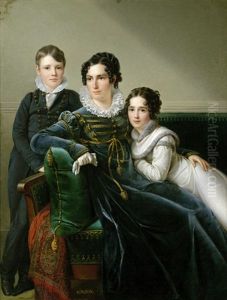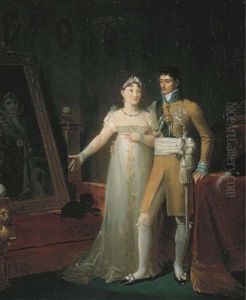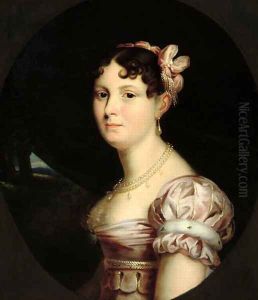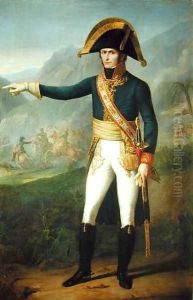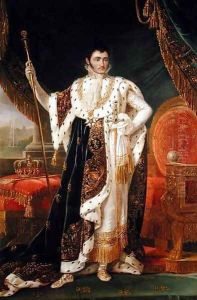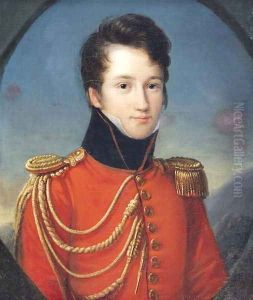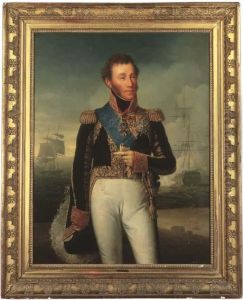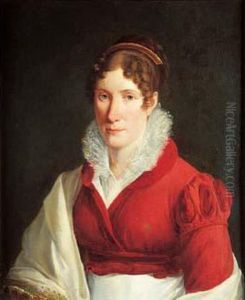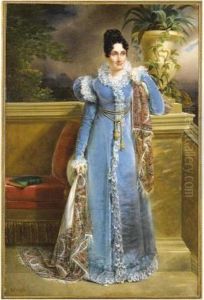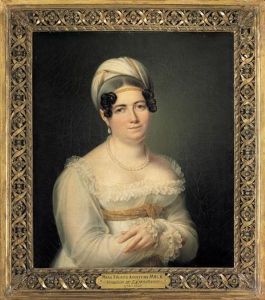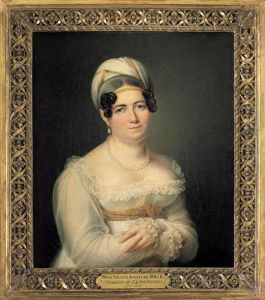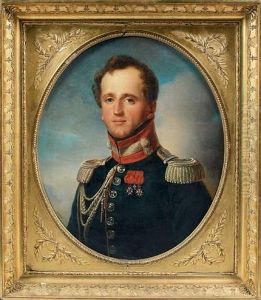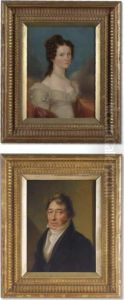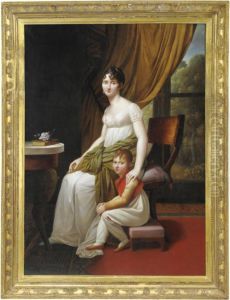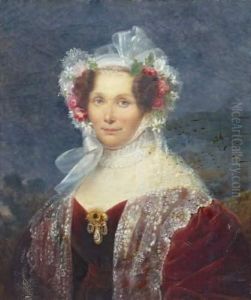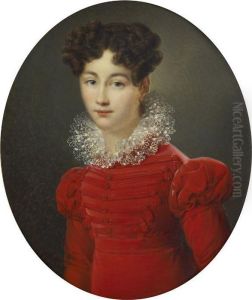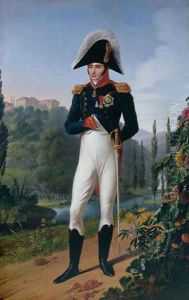Francois Josephe Kinson Paintings
François-Joseph Kinson was a Belgian portrait painter who was born on September 30, 1771, in Bruges. His artistic career emerged during a period of significant political and social change in Europe, including the French Revolution and the Napoleonic Wars. Kinson's family was not particularly wealthy, but they recognized his artistic talent early on and supported his education in the arts.
Kinson studied under the painter Joseph-Benoît Suvée, who was also from Bruges and later became director of the French Academy in Rome. Kinson's training continued in Paris, where he was influenced by the Neoclassical style, which was dominant at the time. In Paris, he was exposed to the works of leading artists of the era, such as Jacques-Louis David, which had a lasting impact on his painting style.
After his studies, Kinson returned to Bruges and established himself as a portrait painter. He gained a reputation for his refined style and ability to capture the likeness and character of his subjects. During the French occupation of the Netherlands, Kinson held several official posts, including that of court painter to Louis Bonaparte, King of Holland, Napoleon's brother. This position allowed him to paint portraits of many notable figures of the time.
In 1813, Kinson moved to Brussels, where he continued his successful career. He became a member of the Royal Academy of Fine Arts in Belgium and was later appointed the Director of the Academy of Fine Arts in Bruges. His works were exhibited widely, and he received numerous commissions from the aristocracy and upper classes. Kinson's portraits are characterized by their elegance, meticulous detail, and subtle use of color.
François-Joseph Kinson passed away on January 3, 1839, in Brussels. Despite his success during his lifetime, Kinson's work was somewhat overshadowed by the emergence of Romanticism and later movements. Nevertheless, his portraits remain an important part of Belgian art history and provide valuable insights into the fashion and culture of the early 19th century.
